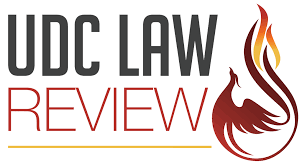
Abstract
The No Child Left Behind Act ("NCLB" or the "Act") 1 has created a once in a lifetime opportunity to improve American public education. NCLB has embraced vital goals for the new Information Age: academic proficiency for virtually all public school students and elimination of the severe racial/income "achievement gap." The Act provides four pillars on which states and localities might build a bridge to reach the goals: higher standards; periodic testing to measure the extent to which the standards are being met; disaggregating test results by student subgroup; and reporting to the public. The critical question is "how to build that bridge?" What do the states, districts and schools need to do to dramatically improve learning so as to bridge the vast chasm that separates millions of children, particularly poor, black and Hispanic students, from the goals of the NCLB?
First Page
1
Recommended Citation
Gershon M. Ratner,
Why The No Child Left Behind Act Needs To Be Restructured To Accomplish Its Goals And How To Do It,
9
U.D.C. L. Rev.
1
(2007).
Available at:
https://digitalcommons.law.udc.edu/udclr/vol9/iss1/2

